Abstract: This article delves into the first millennia of Homo sapiens, exploring their emergence, early existence, and pioneering spirit. We examine the sparse yet telling fossil evidence that paints a picture of their spread across Africa and beyond the continent. The narrative considers the limitations of the fossil record, our adaptive strategies, and interactions with other ancient humans. By intertwining scientific findings with philosophical musings on time and existence, we provide a comprehensive overview of how our ancestors began their journey.
Tracing Our Roots: The Pioneering Spirit of Early Homo sapiens.
A millennium is a long time. Think about a decade of your life, that’s a very long time, but it does come and go. A hundred years is more than a lifetime and at a human-level, a millennium is nearly eternity. Homo sapiens emerged about 315 millennia ago and the truth is that they were almost as smart and capable as us. Their pioneering spirit was strong, they roamed, and they might have roamed outside of Africa within the first millennia. Let’s explore their emergence and their world during this time some 315 to 300 millennia ago.
As we progress through this story, keep in mind that our focus is on what we know, but we also know that only about one bone in a billion fossilize. Even then, we still have to find it! Of all the bones ever fossilized and still exist, perhaps as much as 90% still remain underground. So many in fact that our current approach is to simply watch the surface of the Earth for the ones that show up from natural erosion. And this has philosophical implications too.
If you think about your life and the nature of impermanence, very little to nothing survives the test of time. Now, imagine a world in which sticks and rocks are your tools and the things you build are primarily built out of wood. The lesson we’ve learned from this is clear, almost nothing survives the test of time. We know this and can use it in our analysis. We can surmise things. For example, it is very reasonable to assume if we find fossils of a species that roamed in various areas, all else being equal, odds are they also roamed into nearby areas as well. However, our focus must always be on reasonable interpretations of the evidence. In my Idea of Ideas terms, our focus must be on our Rational Ideas about our Empirical observations.
African Homo sapiens Evidence
What do we know? Homo sapiens were primarily found in Africa during their first millennium sometime around 315 millennia ago. Fossil evidence places them in various locations across the continent over the next 100 millennia, including sites in Eastern and Southern Africa like Omo Kibish (Ethiopia), Herto (Ethiopia), and Border Cave (South Africa). These early humans were mostly nomadic hunter-gatherers, staying in one place only as long as the resources allowed. They exhibited a pioneering spirit and spent their time adapting their tools and living strategies to the diverse environments they entered. During these early millennia there were likely a dozen species of ancient humans roaming around, with Homo erectus, Homo heidelbergensis, and Homo naledi being a few of the well-known.

Hominins Outside Africa
Outside of Africa, various hominins thrived, adapting to diverse environments long before Homo sapiens emerged. For example, evidence of Homo erectus has been found in areas such as Eastern China, Java, and other parts of Southeast Asia, while Homo floresiensis, often referred to as the “Hobbit,” found its way all the way onto the isolated island of Flores in Indonesia.
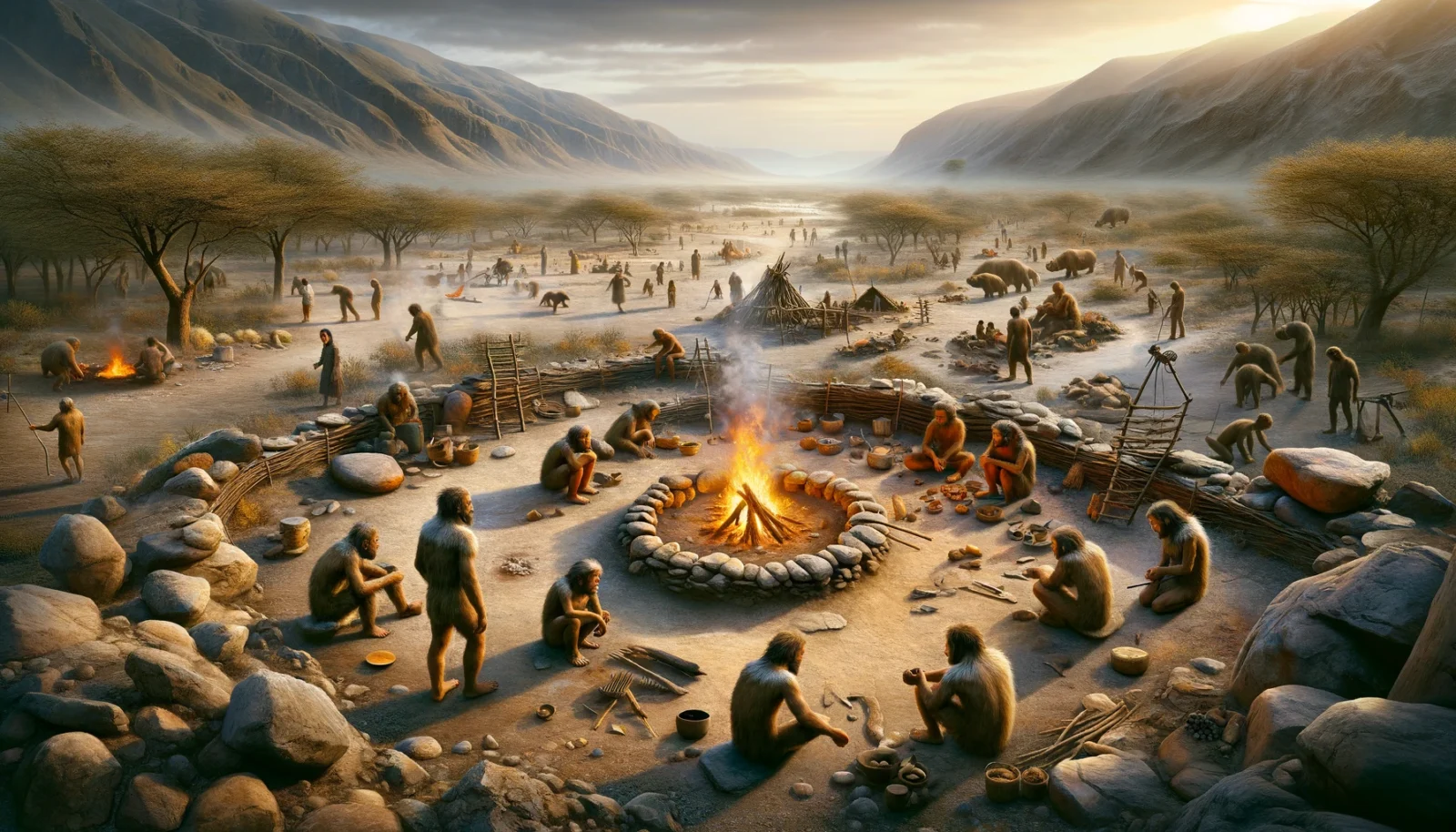
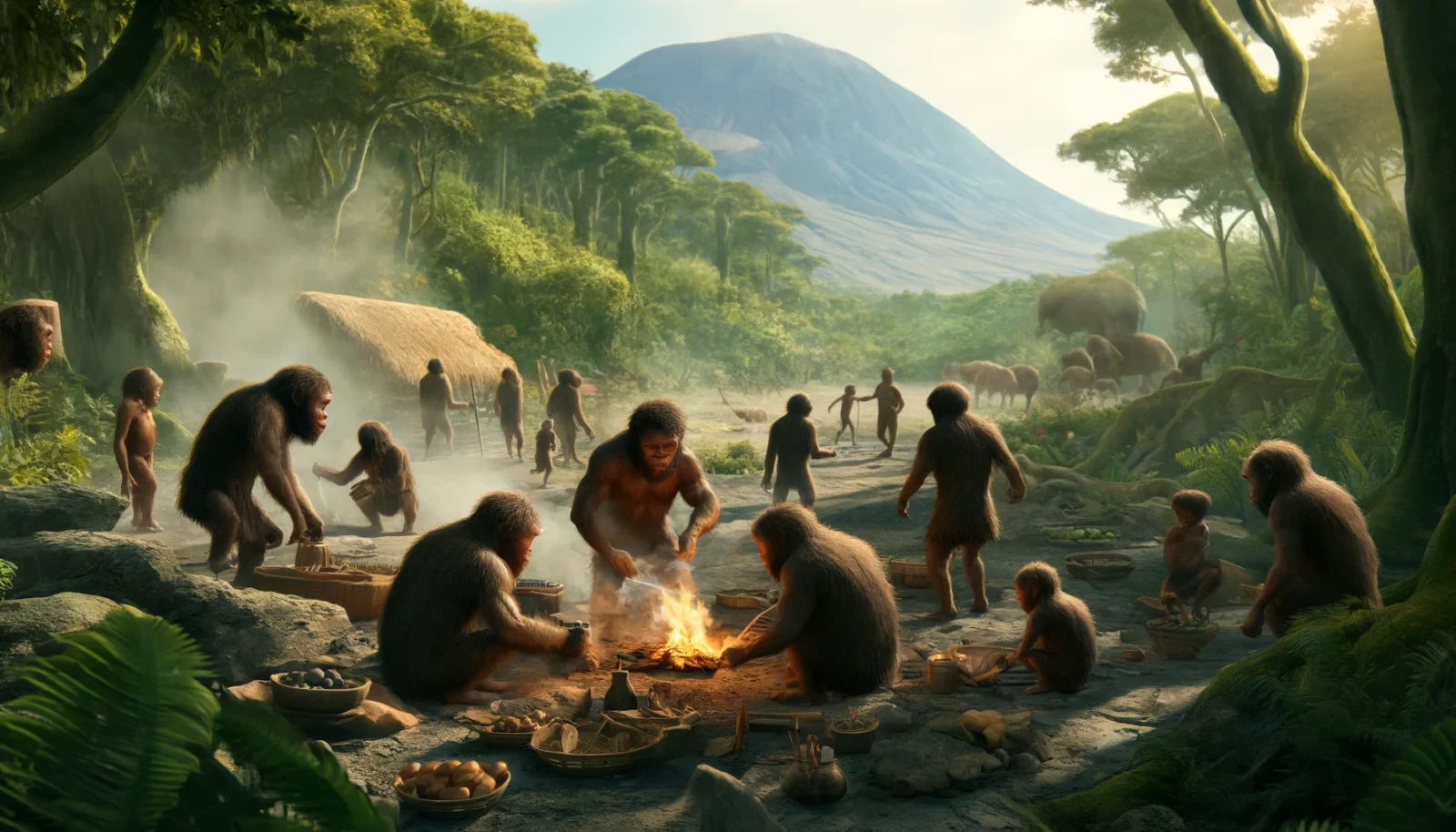

Weekly Wisdom Builder
Got 4 minutes a week?
A new 4-minute thought-provoking session lands here every Sunday at 3PM, emailed on Mondays, and shared throughout the week.
Exactly what the world needs RIGHT NOW!
In addition to the regions inhabited by Homo erectus and Homo floresiensis, other ancient humans like Homo heidelbergensis spread across much of Europe and Asia. These hominins demonstrated significant adaptability and were the forerunners in developing more complex tools and social structures, laying the groundwork for future human evolution.

Long before Homo sapiens established themselves in Africa, these other hominin species roamed vast areas of Eurasia. All co-existing for many millennia, and they were similar enough it lead to frequent interbreeding. For example, today we have clear evidence of Homo sapiens interbreeding with denisovan and Neanderthal long after this early timeframe.
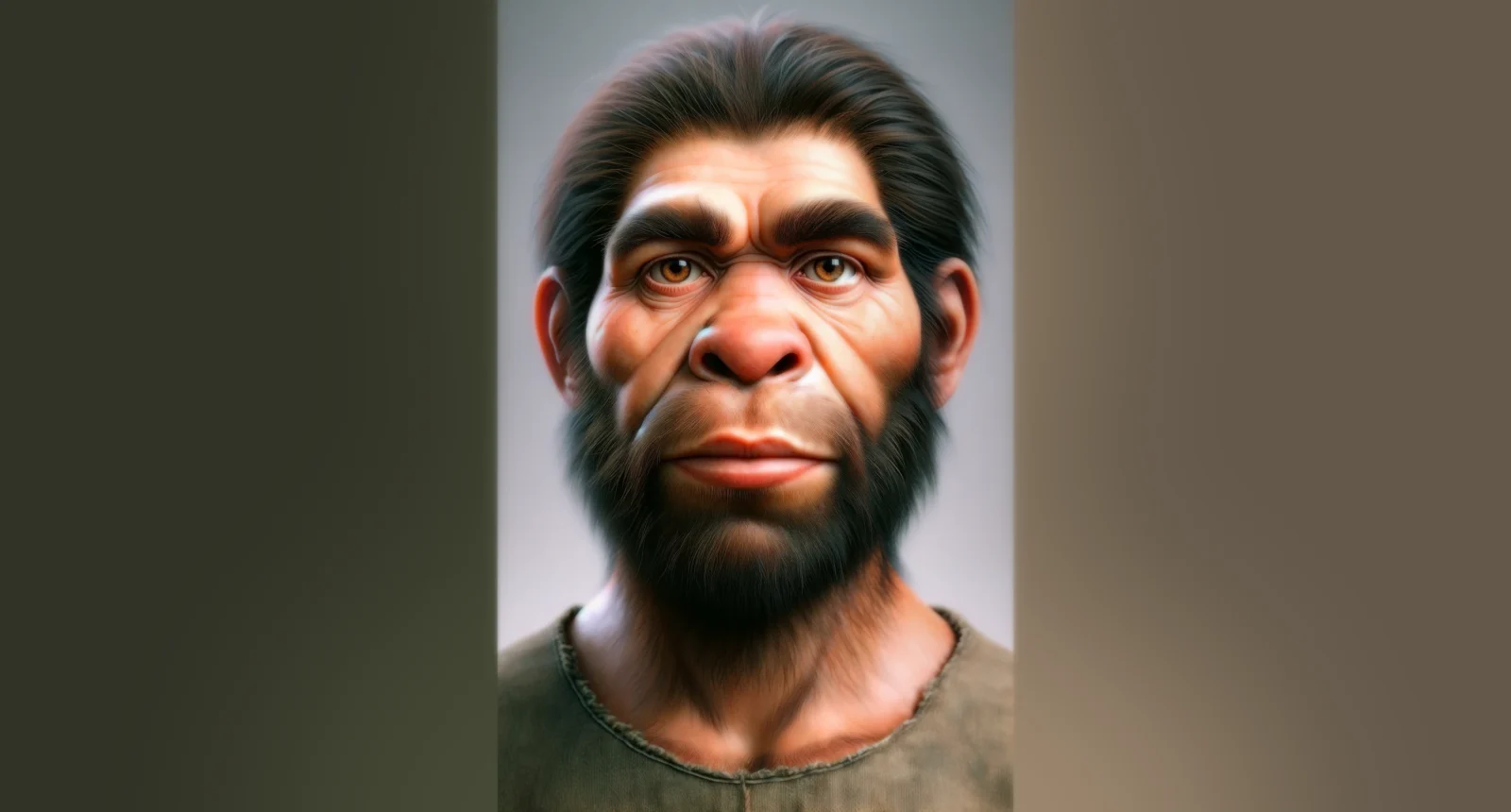
Neanderthals Emerge
Neanderthals emerged in Europe around 440 millennia ago and marked a new chapter in human evolution outside of Africa.
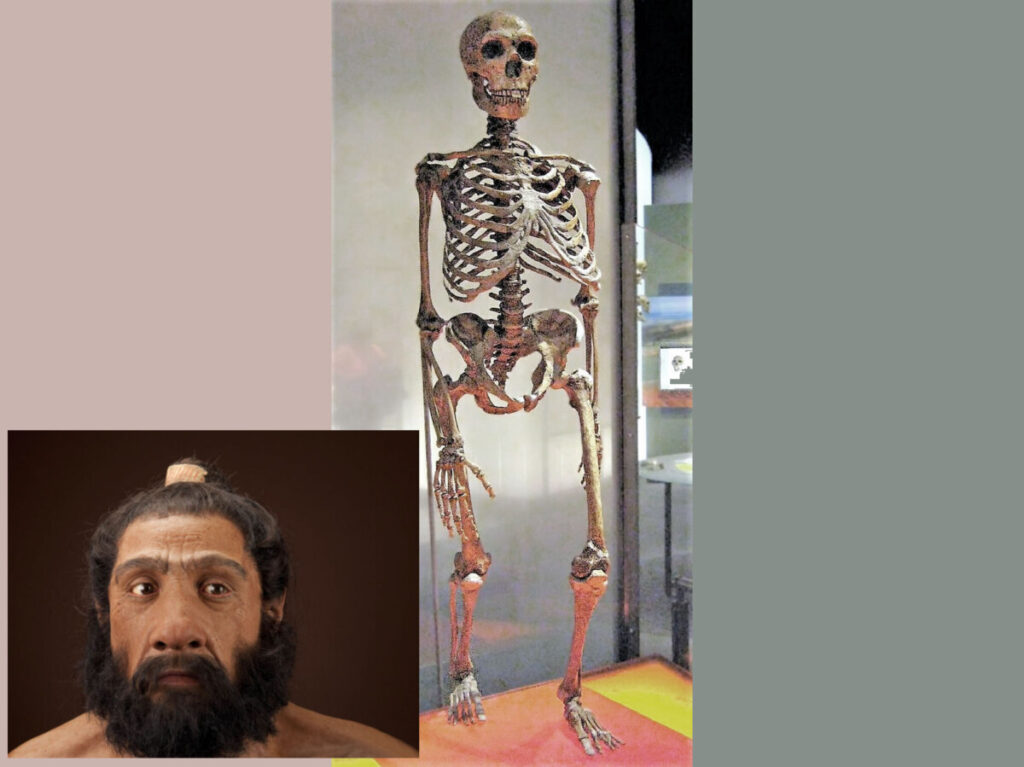
They evolved from populations similar to Homo heidelbergensis and coexisted with other hominin species. There emergence from a completely different line of Homo heidelbergensis and their similar cognitive ability to Homo sapiens suggests human cognitive ability evolved by 450,000 years ago. Neanderthals adapted well to the colder climates of Ice Age Europe and expanded their range into Western Asia. Neanderthals were highly adaptable and resourceful, surviving in a range of environments, from the cold climates of Ice Age Europe to the warmer regions of the Middle East. Their spread marked a significant milestone in human evolution, as they developed complex tools, art, and social structures. Many millennia is a very long time, multiple eternities on the human scale. While we have no evidence of neanderthals in Africa during the early years of Homo sapiens, it’s reasonable to assume a few strayed through parts of Africa from time to time.
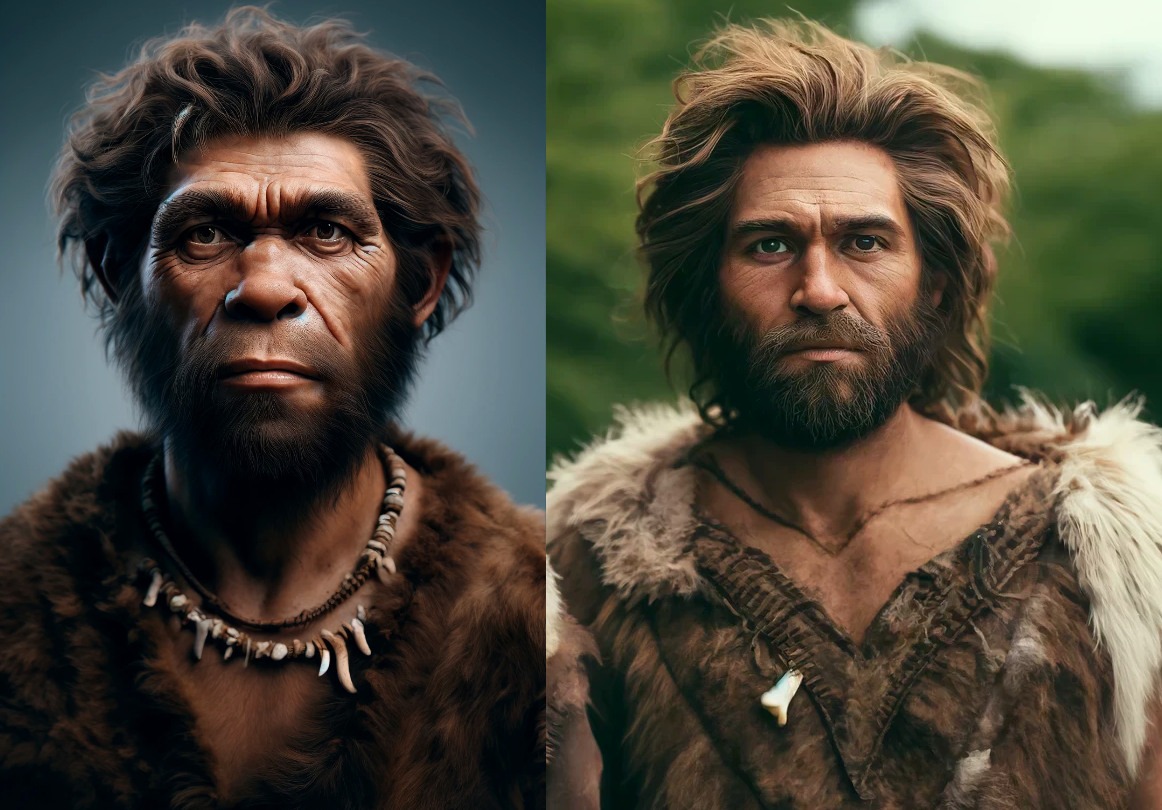
Homo sapiens Emerge
During these early years, sometime around 315 millennia ago, a species of Homo heidelbergensis in North Africa accumulated enough unique traits different enough from their neighbors to call them a new species: Homo sapiens. Alternatively, a species of an even earlier hominins known as Homo antecessor might be the progenitor to both neanderthals and sapiens. Either way, the reality is that they didn’t look at themselves as a different species. They likely just saw their neighbors, and the people they ran into, as just a bit different than them, and left it at that.
In terms of what we actually know about Homo sapiens, the earliest fossils date back to about 315 millennia ago in Morocco, North Africa. For the first 100 millennia, current evidence suggests they remained mostly within the African continent, honing their tools and cultural practices.

How many times did our ancient ancestors roam out of Africa? We don’t know because the evidence is too sparse. For sure many more times than we currently know about. We do have evidence of Homo sapiens migrating out of Africa at 300, 270, 220, 200, 190, 180, 130, and 115 millennia ago as well as many successful migrations starting around 100 millennia ago. “Successful” just means we’ve found genetic evidence suggesting their specific DNA contribute to the modern human DNA pool.
The Homo sapiens that contributed to the bulk of our “human” DNA pool were born in Africa about 70 millennia ago. Our ancestors migrated to the Middle East, Europe, and Asia mostly replacing other hominin species as they went. This migration marked the beginning of the spread of modern humans across the globe, ultimately leading to the incredible diversity of cultures, languages, and populations we see today.

While we have evidence so far of only a half dozen or so known migrations out of Africa, we can surmise many took place. Think about the pioneering spirit of humans, the length of a millennia, and how little survives the test of time. It’s reasonable to assume there were bands and tribes that migrated out of Africa likely every few generations. How much of that DNA remains in our collective pool of DNA is under scrutiny right now and something to look forward to as the experts uncover this story. Our history.
— map / TST —
Pick up on the rest of the story…
Pick up the human story after this evolutionary progress. My latest book, my 15th, tells the story of human thought. From a central empirical viewpoint, it documents the origins of our best modern ideas as well as tells the story of the influence of True Believers and True Skeptics. From chronoception and philosophical musings to Einstein’s groundbreaking theories, this comprehensive narrative spans from 2600 BCE to 1980, enriched with contemporary insights. Read the full story and uncover the evolution of human thought in its entirety.
Coming December 2024: Immerse yourself in knowledge, not snippets.
- Discover how 30 influential philosophers shaped our understanding of the world.
- Explore the concepts that continue to influence science, art, and culture today.
- Get your copy now and start thinking like the greatest minds in history!
















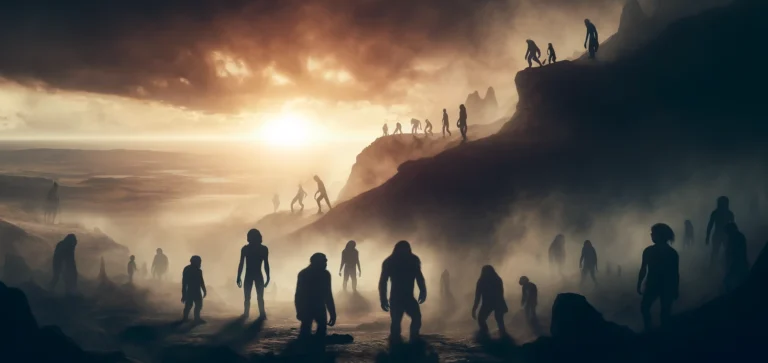
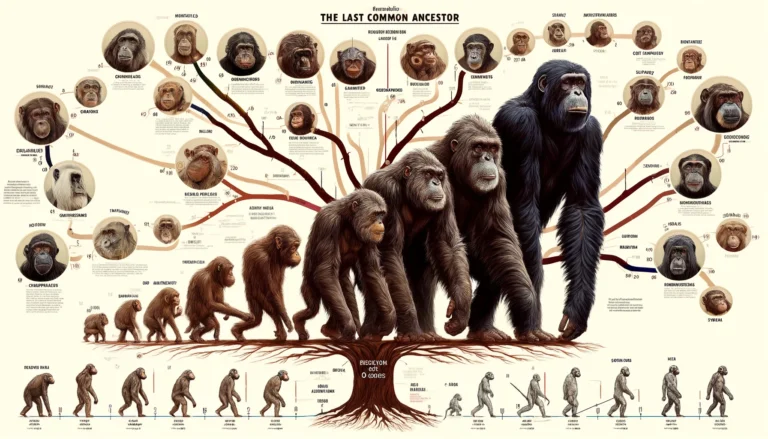
3 thoughts on “Dawn of Humanity: Sapiens in Their First Millennia”
This article really made me wonder about the daily lives of early Homo sapiens. What kinds of tools and technologies do you think were most important for their survival and development?
Great question! Early Homo sapiens relied heavily on stone and stick tools, which marked significant technological advancements. While we lack evidence of wood tools, they likely used wood tools for longer than stone ones. I like to imagine our early ancestors picking up a good stick for their daily use. Kind of like a walking stick but they used it to ward off things and perhaps to hunt and dig. Rock tools that did survive, like hand axes, scrapers, and spears were essential for hunting, processing food, and building shelters. The development of fire-making techniques also played a crucial role in cooking food, providing warmth, and protection. These innovations not only improved their chances of survival but also allowed them to thrive in diverse environments.
The exploration of Homo sapiens’ first millennia is truly fascinating. I was particularly intrigued by the discussion on early human migrations and the development of diverse cultures. It’s amazing to think about how these early humans adapted to various environments and laid the foundations for modern societies.
One aspect that stands out to me is the role of climate changes in shaping human evolution and migration patterns. How do you think early humans managed to survive and thrive in such varied and often harsh conditions? What strategies and innovations might have been most critical during these early periods?